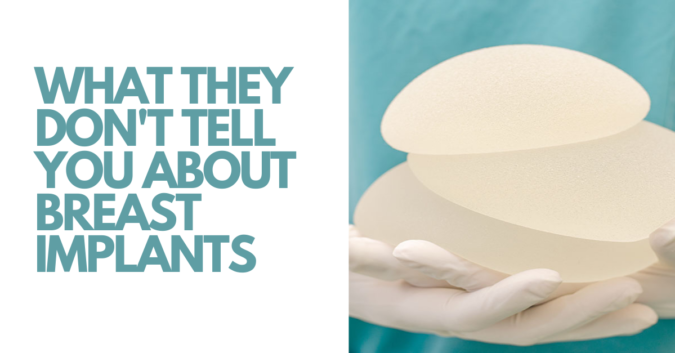The majority of American women are not aware that breast implants are linked to a rare form of cancer. While researchers and regulators have come to important conclusions about implant safety, knowledge of the disease lags among the public.
A first-of-its-kind survey published by the American Society of Plastic Surgeons (ASPS) found that only 13.6% of women had previously heard of breast implant-associated anaplastic large-cell lymphoma (BIA-ALCL). Of women who currently had implants, nearly half had never heard of the illness.
Also known as breast implant cancer, BIA-ALCL is a cancer of the immune system. The exact biological mechanisms that cause BIA-ALCL are not fully understood, but most cases are found inside the capsule of scar tissue that surrounds the implant inside the body.
Although rare, a rising number of breast implant cancer cases prompted the U.S. Food and Drug Administration (FDA) and regulators around the globe to issue guidance for patients and medical professionals.
Additionally, the FDA asked the manufacturer Allergan to voluntarily recall Natrelle BIOCELL textured breast implants and tissue expanders. The agency said that “the risk of BIA-ALCL with Allergan BIOCELL textured implants is approximately 6 times the risk of BIA-ALCL with textured implants from other manufacturers marketing in the U.S.”
The risks are real, but many remain unaware.
BIA-ALCL Survey Highlights Need to Raise Awareness
Roughly 400,000 people undergo breast implant surgery each year. Most procedures are done for cosmetic reasons, but a sizable portion are for reconstruction after breast surgery or gender-affirmation surgery.
No matter the reason, people who are considering breast implant surgery should have all of the relevant safety information when they make a decision. Sadly, that does not seem to be the case.
“Despite the growing awareness of BIA-ALCL, only a minority of laywomen in the United States have heard of ALCL and its association with implants,” conclude the survey authors. “We must continue to relay the evolving science of BIA-ALCL to the public.”
Raising awareness about BIA-ALCL is important. People need to be able to make informed decisions about whether or not to get an implant, and how to identify symptoms early.
According to the FDA, the main symptoms of BIA-ALCL may occur years after the surgical incision has healed.
Common BIA-ALCL symptoms include:
- Persistent swelling
- Presence of a mass or pain in the area of the breast implant
These symptoms, and other less common symptoms of BIA-ALCL, may occur years after the surgery, long after the original incision has healed.
If new cases can be identified quickly, patients can receive timely care and treatment, which increases the chances of a successful recovery. Moreover, the testing that provides patients with proper treatment also gives researchers valuable data to learn how the cancer grows and spreads.
Understanding BIA-ALCL
BIA-ALCL is a rare form of non-Hodgkin’s T-cell lymphoma, which means it is an immune system cancer. This is different from breast cancer, which forms in cells that are part of the breast.
“In most cases,” according to a set of questions and answers from the FDA, “BIA-ALCL is found in the scar tissue and fluid near the implant, but in some cases, it can spread throughout the body.”
When an implant is placed inside the body, scar tissue forms a capsule around it. Within this capsule is a layer of fluid surrounding the implant, known as the seroma. The cancer is most often found in the seroma, or in the inside lining of the scar capsule.
Experts are still working towards a full explanation of how BIA-ALCL develops.
Some of the proposed factors that may contribute to the cancer include:
- Adverse reactions to silicone implant composition
- Biofilm on the implant surface
- Genetic predisposition
- Preexisting allergies and autoimmune conditions
Even though the exact progression of the cancer is unknown, it appears that one of the most important risk factors concerning BIA-ALCL is the surface type of the implant.
Smooth vs Textured Implants and BIA-ALCL
A growing body of research has shown that the risk of BIA-ALCL is higher for implants with a textured surface than those that are smooth.
With a sandpaper-like feel, textured implants have a lot more surface area than smooth implants. This makes it easier for the implant to adhere to the surrounding tissue. The idea was that textured surfaces would prevent the implant from moving or capsular contracture.
Unfortunately, there appear to be unintended consequences of texturing the implant surface. According to the survey authors, “BIA-ALCL is known to be associated with textured implants with the risk correlating to the degree of texturing present on the implant’s surface.” The more texturing present, the greater the risk.
Beyond the Natrelle BIOCELL products from Allergan, the FDA has not requested the recall of any other textured breast implants, though research is ongoing.
Breast Implant Cancer Lawsuits
Last year, Kaiser Health News reported on the existence of a hidden FDA database where some companies were reporting medical device injuries and malfunctions. Instead of sharing this crucial information on the well-known, widely-scrutinized database for medical device injuries, they filed Alternative Summary Reports (ASRs), effectively burying the evidence.
More than 1 million incidents where people were injured by surgical staplers, mechanical breathing machines, and other medical devices went virtually unreported through the hidden database.
Allergan allegedly used ASRs in order to hide evidence that their textured breast implants were causing problems. By manipulating their reporting, they kept doctors and patients in the dark about the true nature of the risks associated with their products.
If you are living with BIA-ALCL, you may be able to take legal action against the company that harmed you. Contact us today, and see if you are entitled to compensation.
All brands are trademarks of their respective companies.
